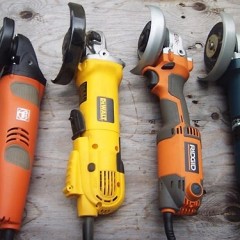Light meter operating instructions
Dial gauge
So, to measure the illumination of the workplace with an arrow light meter, you need:
- Place the device in a horizontal position, directing the photocell towards the light source.
- Install a suitable nozzle on the photocell.
- Take readings by pressing the left or right button, depending on the situation. The left button allows you to read the readings from the lower scale (up to 30 Lx), and the right button from the top (from 0 to 100 Lx). In addition, each nozzle has its own coefficient of attenuation of the light flux, therefore it is important to take into account this moment, which is clearly described in the video lesson provided below (model U-116):
Also, when using the meter, you must consider several important requirements:
- no shadow should fall on the photocell;
- before work, the arrow should be at zero, if this is not so, use the corrector to set it to zero (you will need a screwdriver for this);
- sources of electromagnetic radiation located near the luxmeter can cause interference, and, accordingly, measurement errors, so you need to remove them for the duration of measurements;
- if with the installed nozzles the illumination displayed on the display is less than 30 Lux, it is necessary to remove the nozzles and use a meter with an open photocell.
That’s the whole instruction manual of the arrow light meter. As you can see, there are no difficulties in measuring. The main thing is to take into account the recommendations and requirements provided.
Electronic device
Using an electronic light meter is much easier. All you need is to turn on the power and select the appropriate function. The device automatically selects the desired ratio and takes measurements. As for the functions, in addition to measuring the illumination in the room, some models also allow you to measure the ripple coefficient and brightness of light sources. We will briefly discuss how to use each of the functions using the example of the RADEX LUPIN model.
To measure the ripple coefficient with a light meter, you need to turn it on and press the P button. Then place the device in a horizontal position (if the ripple coefficient of the ceiling lamps is measured) or direct it to a light source (for example, a desk lamp, as in the photo below). After that, read the testimony and draw the appropriate conclusions.
Important! Measurements can be affected by light from other sources of illumination, movement when using a light meter (therefore, it should lie still), and even foreign objects, such as a falling sheet. Consider these factors if you want to take measurements as accurately as possible.
If you want to measure the illumination of a room with a luxmeter, then you need to use it according to the following instructions:
- position the meter horizontally in the direction of the light source;
- press the "E" button;
- get the result on the display.
Note that the remaining lights or the lamps affect the readings, so if you want to measure the level of illumination from one specific light emitter, for example, a chandelier, all other lights must be turned off.
Important! About, what should be the level of illumination in accordance with GOST, you can find out from our article!
Well, the last function that you can use in RADEX LUPIN is to determine the brightness. Most often, brightness is determined by monitors and television screens. To independently check the brightness of the lighting, you need to put a pure white background on the screen you are checking, press the L button, place the photocell 1 cm from the screen and take the result. It is advisable to keep the light meter stationary in order to obtain an accurate value. Also, to determine the brightness, it is recommended to perform several measurements and calculate the average value.
An example of the use of this meter is provided in the video:
Another fairly popular model is the HS1010. How to use it is described in this video:
That's all we wanted to tell you about how to use the light meter. We hope the provided instruction came in handy!
Surely you do not know:








